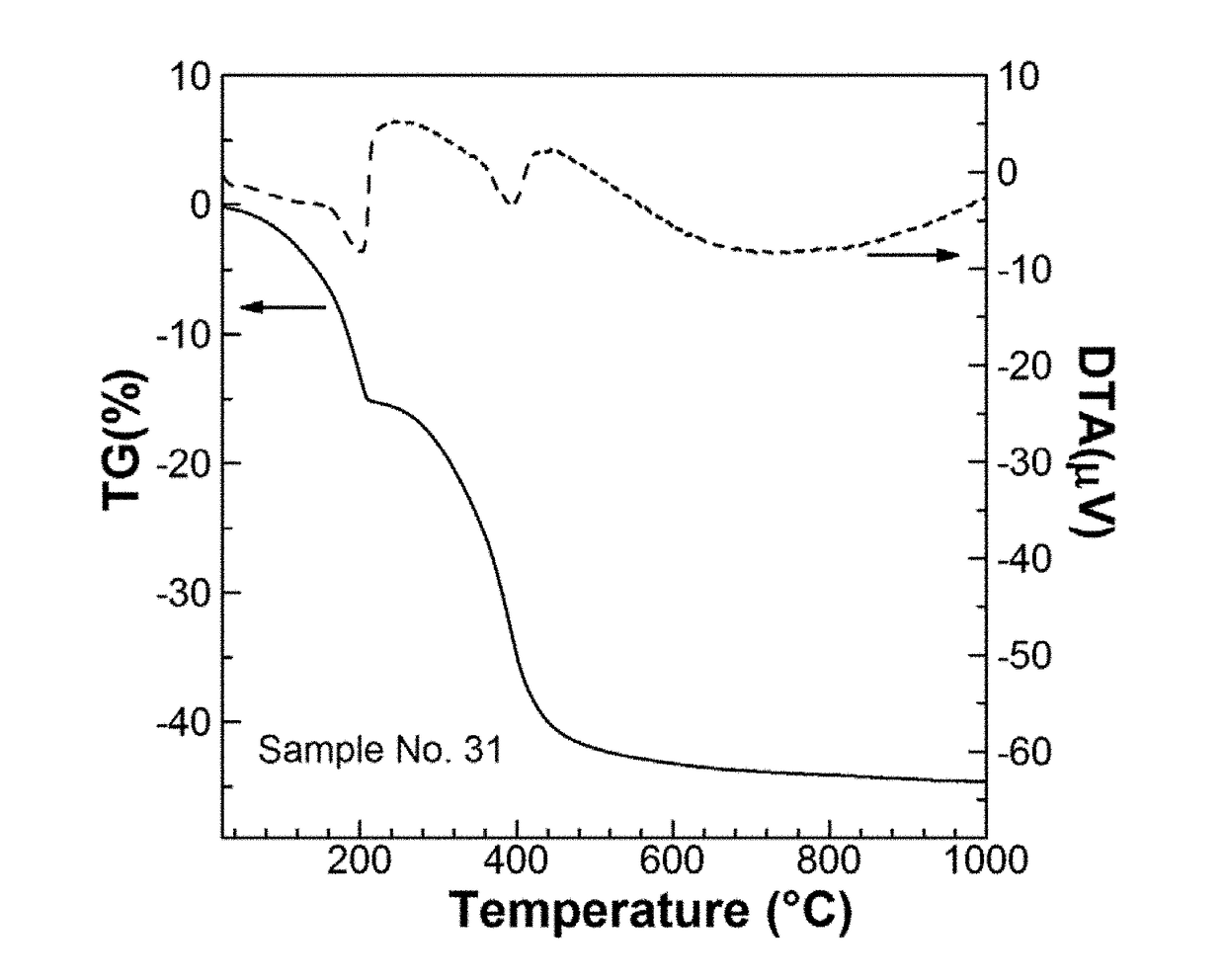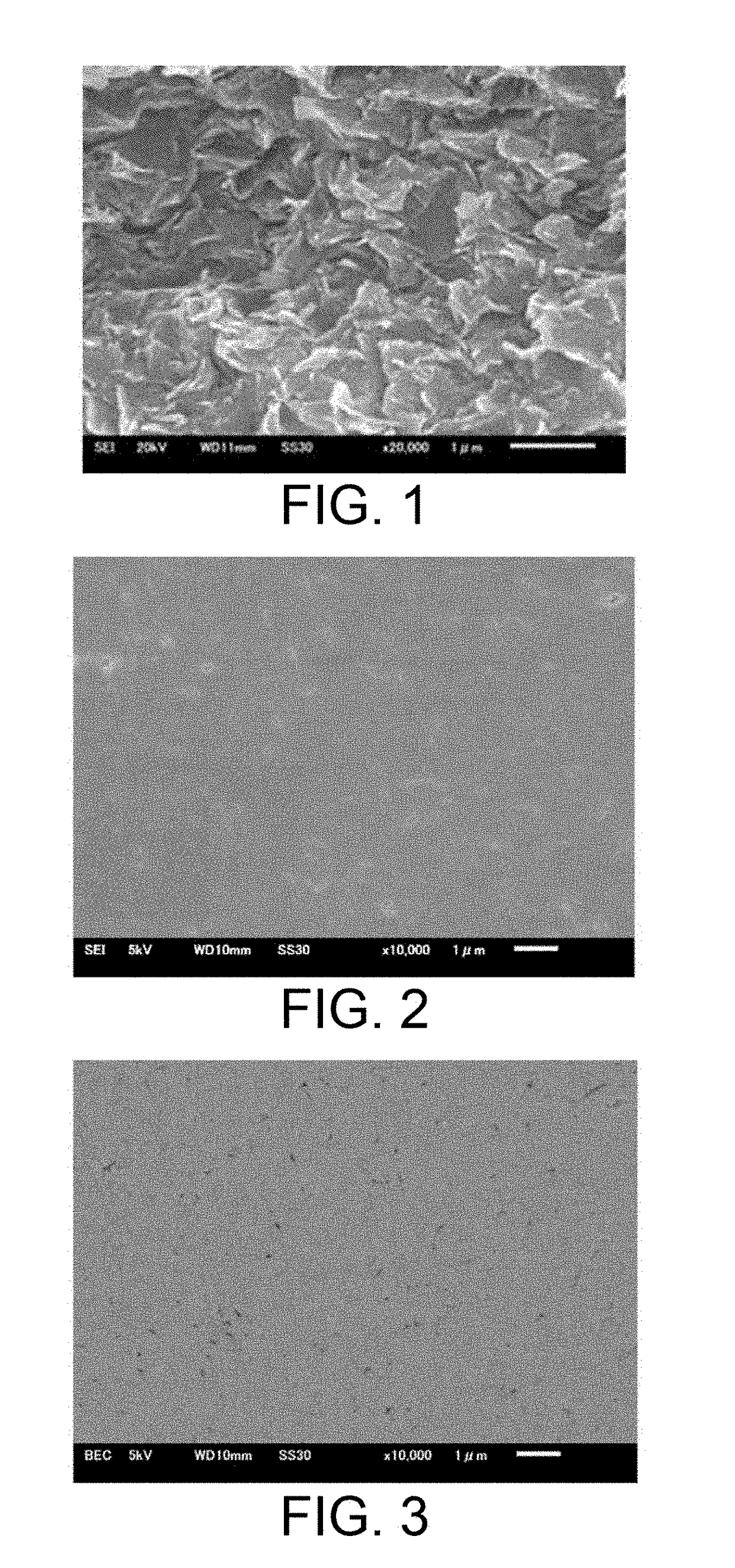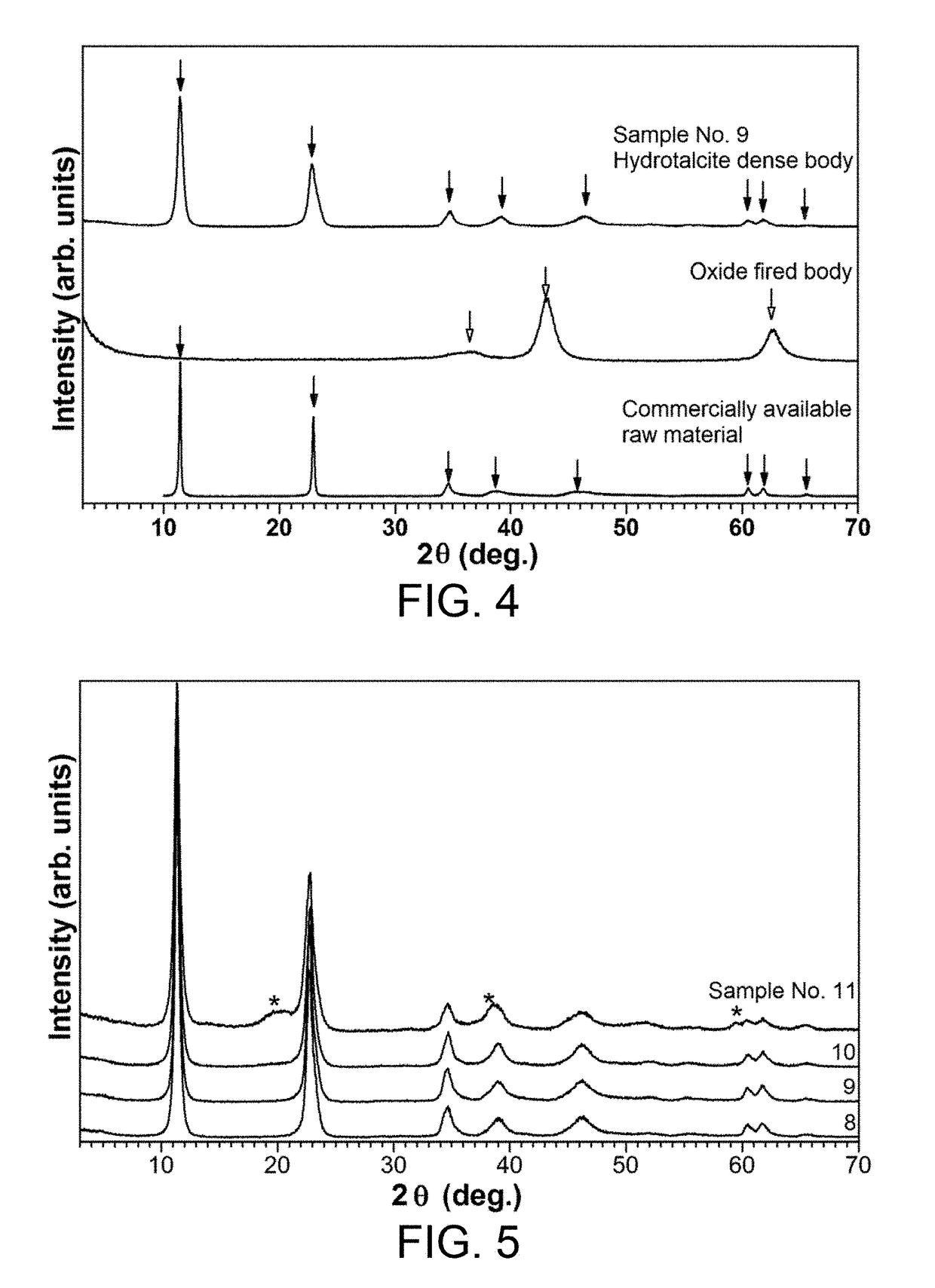Dense layered double hydroxide, and method for producing same
a double hydroxide and dense technology, applied in the field of dense layered double hydroxide, can solve the problem of inability to densify ldhs by firing, and achieve the effect of simple and stable manner
- Summary
- Abstract
- Description
- Claims
- Application Information
AI Technical Summary
Benefits of technology
Problems solved by technology
Method used
Image
Examples
example 1
on of Layered Double Hydroxide Dense Body
[0045]Samples 1 to 35 that are hydrotalcite dense bodies, i.e., one type of layered double hydroxide, were prepared under the various conditions shown in Table 1. Specific procedures of preparing the samples are as follows.
(Samples 1 to 21, 29, 30, and 33 to 35)
[0046]A hydrotalcite powder (DHT-6, manufactured by Kyowa Chemical Industry Co., Ltd.) that is a commercially available layered double hydroxide was provided as a raw material powder. The composition of this raw material powder was Mg2+0.75Al3+0.25(OH)2CO3n−0.25 / n.mH2O. The raw material powder was filled in a metal mold having a diameter of 16 mm and uniaxially pressed at the compacting pressures shown in Table 1 to obtain compacts having a relative density of 44 to 62% and a thickness of about 2 mm. Measurement of this relative density was performed on compacts that had been stored for 24 hours at room temperature and a relative humidity of 20% or less. The resulting compacts were fir...
example 2
nt of Relative Density
[0051]The density was calculated from the size and weight of each of Samples 1 to 35, and this density was divided by the theoretical density to determine the relative density. The value of 2.06 g / cm3 as provided in JCPDS Card No. 22-0700 was used for the theoretical density of hydrotalcite with Mg / Al=3, and the value of 2.09 g / cm3 as provided in JCPDS Card No. 70-2151 was used for the theoretical density of hydrotalcite with Mg / Al=2. Results were as shown in Table 1.
example 3
on of Cross-Sectional Microstructure
[0052]The fracture surface or polished surface of Samples 3 and 9 was observed using a scanning electron microscope (SEM, JSM-6610LV, manufactured by JEOL) with an accelerating voltage of 5 to 20 kV. FIG. 1 shows a secondary electron image obtained from the observation of the fracture surface of Sample 9. FIGS. 2 and 3 show a secondary electron image and a reflection electron image, respectively, obtained from the observation of the polished cross-sectional surface of Sample 3. In the reflection electron image of FIG. 3, the black portions having a size of 0.1 μm or less are presumed to be pores, and it can be understood that the sample is sufficiently dense.
PUM
| Property | Measurement | Unit |
|---|---|---|
| temperature | aaaaa | aaaaa |
| thickness | aaaaa | aaaaa |
| particle size | aaaaa | aaaaa |
Abstract
Description
Claims
Application Information
 Login to View More
Login to View More - R&D
- Intellectual Property
- Life Sciences
- Materials
- Tech Scout
- Unparalleled Data Quality
- Higher Quality Content
- 60% Fewer Hallucinations
Browse by: Latest US Patents, China's latest patents, Technical Efficacy Thesaurus, Application Domain, Technology Topic, Popular Technical Reports.
© 2025 PatSnap. All rights reserved.Legal|Privacy policy|Modern Slavery Act Transparency Statement|Sitemap|About US| Contact US: help@patsnap.com



